|
Related FAQs: Linckia
Stars, Linckia Stars 2,
Linckia Identification, Linckia Behavior, Linckia Compatibility, Linckia Selection, Linckia Systems, Linckia Feeding, Linckia Disease, Linckia Reproduction, Sea Stars 1, Sea Stars 2, Sea
Stars 3, Sea Stars 4, Sea Stars 5, Seastar Selection, Seastar Compatibility, Seastar Systems, Seastar Behavior, Seastar Feeding, Seastar Reproduction, Seastar Disease, Asterina
Stars, Chocolate Chip Stars,
Crown of Thorns Stars,
Fromia Stars,
Sand-Sifting Stars,
Related Articles: Sea
Stars, Sand Sifters, An Introduction to the Echinoderms: The Sea Stars, Sea
Urchins, Sea Cucumbers and More... By
James W. Fatherree, M.Sc. Genus Valenciennea Gobies, Deep Sand Beds, Live Sand, Biofiltration,
Denitrification, Live Sand, Live
Rock,
/A Diversity of Aquatic
Life
Linckia/Linkia, A Mix of Species, Hardiness Group of
Sea Stars
|
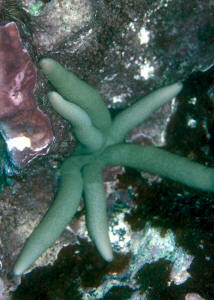 |
| Bob Fenner |
In Kona
|
About "Linckia" Stars: There are a great many
seastars sold as Linckia/Linckia spp. that are decidedly of other
genera. Some are not peaceful bacterial et al. detritus feeders as the
"true" Linckias of many colors (and at least two species). Do
make sure and get a positive identification to species, and research
the nutritional, and system size and type needs before purchasing
stars. The true Linckias are good choices where available in initially
healthy condition, and placed in established, large systems (at least a
hundred gallons) with plenty of live rock, detritus to feed on, and not
too many competitors. Named in honor of J.H. Linck who wrote a
monograph of seastars in 1733. Tropical Atlantic and
Pacific.
| Linckia columbiae the Fragile Seastar.
Semi-tropical Linckia species found in the eastern Pacific. One off
of San Diego California in the process of sampling/eating a sea
anemone. |
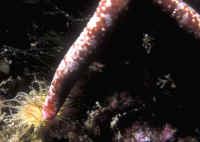
|
| Linckia guildingi Gray 1840, the Green
Linckia. Usually with five (sometimes 4 or 6) arms that are
cylindrical in cross section. Skin appears smooth but is coarse
with low, hard nodules. Though called "green" occurs in
other colors (tan, beige, brown, blue, reddish). Big Island Hawaii
pix. |
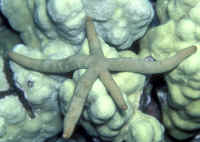 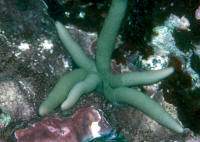
|
Bigger PIX:
The images in this table are linked to large (desktop size) copies.
Click on "framed" images to go to the larger size. |
.JPG) 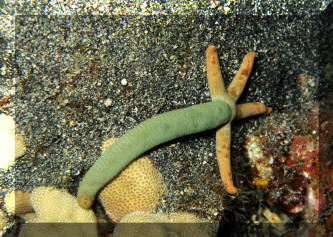 |
| Linckia laevigata (Linnaeus 1758), Linckia,
Linckia... Seastar. Blue and greenish ones in Fiji. Also found in
other colors, brown, tans, violet to burgundy, even mottled... And
there are other species of the genus offered to the trade. This
animal is very (95+ % IME) often doomed from the retailer to
aquarists... having suffered too much damage and neglect in the
process of collection, holding, shipping... Look for damage (ex.
right) and avoid such obviously poor specimens. In the wild this is
an algae, bacteria, detritus feeder... that needs space (hundreds
of gallons) and mulm (muck, dirt, call it what you will, on the
bottom of its system to survive. My advice, look to other genera,
species of seastars. |
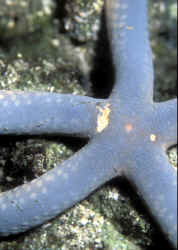
|
Bigger PIX:
The images in this table are linked to large
(desktop size) copies. Click on "framed" images to go to
the larger size. |
|
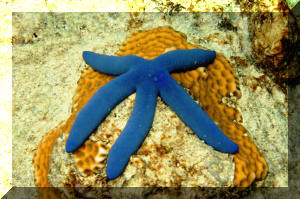
%20MD.JPG)
|
Bigger PIX:
The images in this table are linked to large (desktop size) copies.
Click on "framed" images to go to the larger size. |
.JPG) |
| A Purple "Linckia", Tamaria stria
Gray 1840. Eastern Pacific; Baja to Columbia. Need rock substrate
for habitat, not over-zealously clean. Best kept one to a tank.
Family Ophidiasteridae. |
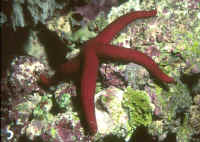
|
|
|

